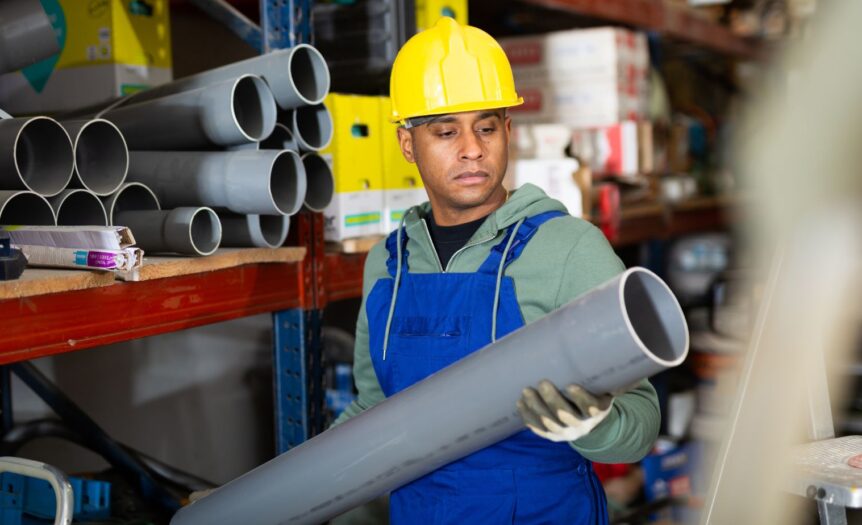Selecting the right materials for construction is a crucial factor in ensuring the longevity and durability of a building. This becomes even more important when considering the diverse climates and environmental conditions that can affect the structure over time. From the scorching heat of deserts to the relentless salty air of coastal regions, each climate demands specific materials that can withstand and thrive under these conditions. This article provides insight into choosing the appropriate building materials for different climatic challenges.
Hot Climates
In hot climates, the choice of building materials can significantly affect the thermal performance of a structure. Materials that reflect heat rather than absorb it are essential to maintain a comfortable indoor environment and reduce the reliance on air conditioning systems.
Reflective Roofing Materials
For roofing in hot climates, reflective materials such as cool roofs are highly effective. These roofs are designed with reflective coatings or materials that reflect more sunlight and absorb less heat compared to standard roofing products. Cool roofs can lower roof temperatures, leading to reduced indoor temperatures and energy savings.
Insulating Materials
Insulation plays a crucial role in hot climates by preventing heat from entering the building. Materials like foam, fiberglass, and cellulose are commonly used for their excellent insulating properties. In addition, walls constructed with materials like insulated concrete forms (ICFs) or autoclaved aerated concrete (AAC) provide enhanced thermal resistance, helping to keep interiors cool.
Cold Climates
In colder regions, the primary concern is to keep the warmth inside the building. This requires materials that offer good insulation and are capable of withstanding low temperatures without deteriorating.
Thermal Mass Materials
Materials with high thermal mass, such as brick, concrete, and stone, absorb heat during the day and release it at night, helping to maintain a stable indoor temperature.
You can also consider stone veneers, which are a great choice for enhancing both the aesthetics and functionality of a building. Some options, like I-XL’s stone veneer panels for exterior applications, provide a perfect balance of longevity and energy efficiency. These materials absorb heat during the day and release it at night, keeping indoor temperatures and decreasing the need for artificial heating and cooling. Compared to traditional brick or solid stone, these options provide similar thermal benefits with a lighter, more cost-effective installation and easier maintenance.

These materials are particularly beneficial in regions with significant temperature fluctuations between day and night.
Insulating Materials
Selecting materials that provide excellent insulation is essential. Key examples include insulated concrete forms (ICFs) and structural insulated panels (SIPs) for high thermal resistance, and advanced insulation materials like aerogel and vacuum insulated panels (VIPs). Durable exterior cladding, such as fiber cement siding and metal roofing, can withstand harsh weather conditions, while natural materials like sheep’s wool insulation offer more sustainable options.
Double-Glazed Windows
Windows are a significant source of heat loss in buildings. Double-glazed or even triple-glazed windows provide better insulation compared to single-glazed options. They reduce heat transfer, keeping interiors warmer during the cold months and contributing to energy efficiency.
Coastal Areas
The proximity to the sea brings its own set of challenges, primarily due to the destructive effects of salty air on building materials. The high salt content in the air can accelerate metal corrosion and degrade other materials over time.
Corrosion-Resistant Metals
For coastal buildings, using corrosion-resistant metals is crucial. Stainless steel and aluminum are excellent choices due to their resistance to salt-induced corrosion. Additionally, protective coatings and galvanizing can further enhance the durability of metal components.
Marine-Grade Wood
The wood used in coastal areas should be treated to resist moisture and salt exposure. Marine-grade plywood, for instance, is specifically designed to withstand the harsh conditions of marine environments, making it suitable for coastal construction.
Masonry Materials
Durable masonry options like brick and natural stone also offer excellent resistance to coastal conditions, and are becoming a popular choice for beach house exteriors. While they are generally more expensive than other options, they offer low maintenance and longevity which is hard to beat. These exteriors can also be finished with a coat of Portland cement plaster, also known as stucco, to improve the resilience in coastal environments.
Strong Winds
Buildings in regions prone to high winds, such as hurricane-prone areas, require materials that can withstand strong forces and maintain their structural integrity. That said, the longevity and resilience of buildings facing strong winds heavily depend on the type and quality of the construction itself rather than the materials used.
Reinforced Concrete
Reinforced concrete is a preferred material in high-wind areas due to its strength and durability. The steel reinforcement within the concrete helps it resist tensile stresses, making it capable of withstanding high wind forces. Insulated concrete forms (ICF) are commonly used in wind-prone areas due to their ability to withstand high winds and impact.
Impact-Resistant Glass
Windows and doors should be equipped with impact-resistant glass to prevent breakage from flying debris during strong winds. This type of glass is designed to remain intact even when shattered, providing an added layer of safety.
High Rainfall
Regions with high rainfall present unique challenges such as water penetration, mold growth, and material degradation. Selecting materials that can resist moisture and maintain structural integrity is essential in these climates.
Water-Resistant Roofing
For high rainfall areas, roofing materials need to be exceptionally water-resistant. Metal roofing, clay tiles, and slate are excellent options due to their durability and ability to shed water efficiently.

Additionally, roofing underlayments and membranes should be installed to provide an extra layer of protection against water infiltration.
Moisture-Resistant Wall Materials
Walls in high rainfall areas should be constructed with materials that resist water absorption. Fiber cement siding, brick, and stone veneer are good choices. These materials not only resist water but also provide a durable exterior finish. Proper sealing and the use of moisture barriers behind the exterior cladding are also crucial to prevent water ingress.
Proper Drainage Systems
Effective drainage systems are vital to managing water in high-rainfall areas. This includes well-designed gutters, downspouts, and grading around the building to direct water away from the foundation. Using materials like corten steel for gutters and downspouts can be beneficial due to its weathering properties, which enhance durability and reduce maintenance needs.
Versatile Solutions for Variable Weather
For regions that experience a wide range of weather conditions, selecting versatile and weather-resistant materials is key. Corten steel, also known as weathering steel, is one such material that offers durability and aesthetic appeal. When exposed to the elements, corten steel forms a stable rust-like patina that protects it from further corrosion, making it a cost-effective and low-maintenance option for facades, bridges, and outdoor sculptures. Its ability to withstand wet and dry cycles makes it particularly suitable for environments with fluctuating weather patterns. While corten steel sheets are incredibly versatile, extra caution should be taken when considering use in environments with constant humidity, extremely high rainfall, or exposure to saline conditions, as these climates can prevent the protective patina from forming properly.
Conclusion
Choosing the right materials for construction based on climate considerations is essential for building durability and longevity. Developers must consider all viable materials for each environment to ensure optimal suitability. By understanding the unique demands of each climate, builders and architects can select materials that not only enhance the structural integrity of buildings but also contribute to their overall sustainability and cost-effectiveness in the long-run.



